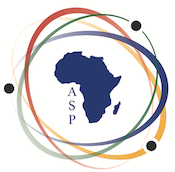Speaker
Description
Introduction: Accurate prediction of radiotherapy complications is crucial for optimizing treatment planning and improving outcomes in breast cancer patients. However, modeling the risk is challenging due to intricate interactions between clinical, demographic, and dosimetric parameters. This study aimed to conduct a comprehensive comparative analysis of advanced machine learning techniques for predicting the risk of complications following breast cancer radiotherapy.
Methods: Specifically, we evaluated logistic regression (LG), linear discriminant analysis (LDA), elastic net regularized generalized linear models (GLMNET), k-nearest neighbors (KNN), support vector machines (SVM), and classification and regression trees (CART) using a large clinical dataset of One Thousand Four Hundred and Twenty-Two (1422) breast cancer patients who underwent radiotherapy from the NSIA-LUTH Cancer center in Lagos, Nigeria. Model performance was rigorously assessed using various metrics, including accuracy, kappa statistic, sensitivity, specificity, receiver operating characteristic (ROC) curves, and area under the curve (AUC).
Results:
The results showed accuracy rates ranging from 0.81 to 0.89 across models. CART exhibited the highest median kappa of 0.18 (Box-Cox transformed) and 0.14 (untransformed), indicating fair to good agreement beyond chance. LG, LDA, and CART demonstrated an AUC ≈ 0.80 on the validation set, suggesting good discriminatory power. In contrast, KNN and SVM had AUC ≈ 0.50, indicating poor discrimination. Despite high accuracy, models showed low sensitivity (≤ 0.06) in detecting positive complication cases.
Conclusion: The CART model emerged as the most promising technique for predicting radiotherapy complications in breast cancer, exhibiting good discriminatory ability and fair to good agreement beyond chance. However, further improvements in sensitivity are needed to enhance the detection of positive complication cases accurately.
| Abstract Category | Medical Physics |
|---|
